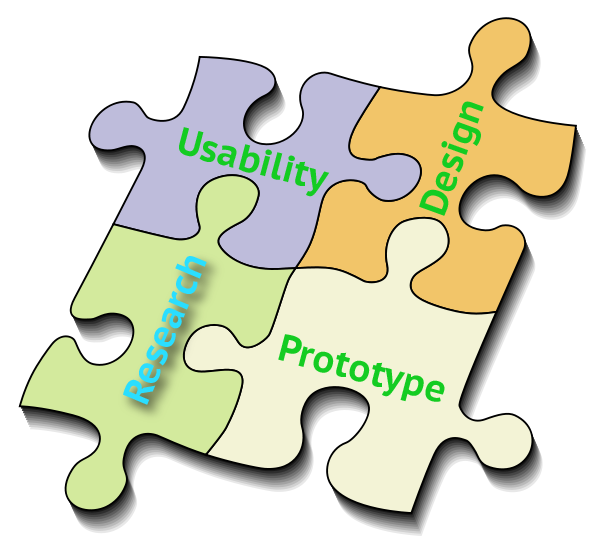Research and insight seeks to deliver knowledge of competition, markets, brand execution and customers. It is inherent in a user-centered design approach that supports business goals, and involves both quantitative and qualitative techniques to add context and insight to the design process.
Why?
To be successful a design not only has to delight users, it needs to provide a better experience than competitors, meet the expectations of the target market, fit within the business strategy, and align with company brand and ethical guidelines. This piece of the UxD jigsaw is provided with effective user research and insight.

What?
Severl different qualitative and quantitative user research methods can be used:

Designed to discover underlying needs and requirements from users, and can lead to new insights and design opportunities

facilitated sessions with a number of people from the target market brought together to discuss specific elements of the design and customer experience. Group participation can stimulate wider discussion but care needs to taken to avoid bias

a set of precise questions sent out to a large sample of the target market. Useful for validating qualitative research and to understand satisfaction levels with existing designs and solutions

observes users in their own environment, in order to understand natural behaviour. The outputs from ethnographic studies can deliver illuminating observations that are integral to implementing a successful customer experience, and form the basis of mental models and personas

collection of thoughts, actions and feelings from the target market, recorded as they occur. As with Ethnography the provide an understanding of natural user behaviour, supporting UX design concepts, and the development of personas
When

User research is often done as initial part of a UxD project, in order to find out more about the target market, competitive position, and user behaviour to help evolve and shape the business strategy
and requirements driving the design, service or solution
Where

Research will be conducted in variety of locations and using different data gathering techniques, from users own environments, focus group venues, to online questionnaires and diaries.
How
 Careful selection/screening of users to reflect the target market is followed by tailored user research programmes, organised to support the design strategy and business objectives
Careful selection/screening of users to reflect the target market is followed by tailored user research programmes, organised to support the design strategy and business objectives




